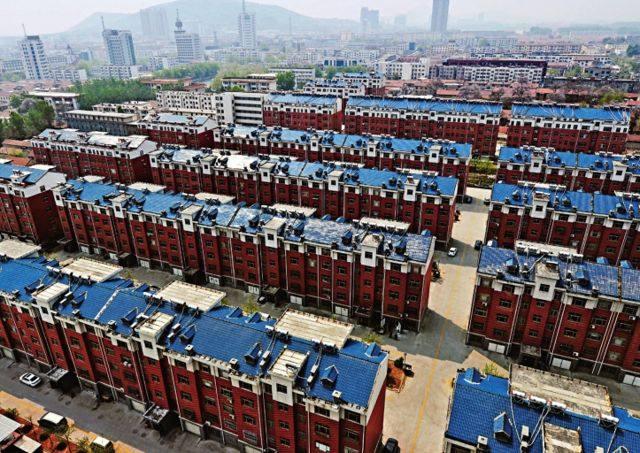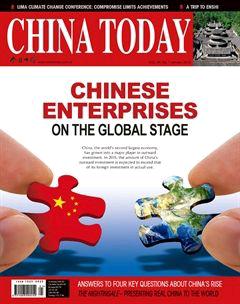Shandong’s Urbanization Paradigm
By WANG ZHE
SHANDONG, a big industrial and agricultural province with a large population, has summarized a clear urbanization concept. The province unveiled on September 3, 2014 its development plan (2014-2030) for a new rural community and new rural area. As a result, some 14,000 villages, of a population of around 14 million, will be combined into cities and towns. Another 21,000 villages will be built into new rural communities, housing 18 million people. The urbanization reforms will also retain around 30,000 villages.
Vanishing Villages
Shandongs rural population fell from 68.8 million in 2000 to 54.82 million in 2013, and that of its rural permanent residents dropped from 57.82 million to 45.02 million. By 2030, the provinces rural population is estimated to decline to 37.5 million and its rural permanent resident population to 29.7 million. This means that by 2030 more than half of Shandongs villages will disappear. As urbanization entails building some 7,000 new communities, this wane in rural population is inevitable.
Urbanization of localities nearby cities is the main feature of Shandongs transfer of rural population. The provinces counties and key towns will absorb the bulk of it. Rural population will inevitably gather in new rural communities, and non-farming occupations will become important sources of extra income for farmers. Shandong will improve infrastructure and public service facilities in both county-level cities and towns. Villages will inevitably merge amid the steady redistribution of population and diminution of villages.
The rapid disappearance of villages and homes that have stood for millennia will have certain unavoidably negative consequences. House demolitions in other places have not taken into account traditional village layouts or the preservation of their historical features. Construction of certain new rural communities has also failed to consider the natural landscapes and historical culture that constitute their rural character. This is why Shandong has retained 30,000 villages in the course of its urbanization reform.
Meanwhile, the province has strengthened its protection of historical sites. Throughout renovations to timehonored architecture, streets, villages and towns, Shandong has ensured that new constructions organically integrate traditional culture and modern functions. The province takes pains to preserve the authenticity, integrity and continuity of intangible cultural heritage through rational utilization, under the premise of effective protection.
Improve Urbanization Quality
By 2020, Shandongs urbanization of permanent population will reach 62 percent. During the process, seven million farmers will be transferred who together with another 10 million rural residents living in the villages of urban areas, will acquire urban citizenship. Meanwhile, the province has implemented different residence migration policies to suit small and medium-sized cities as well as metropolises. They make small cities and towns freely accessible, while medium-sized cities will gradually open in an orderly way, and big cities will relax residence migration restrictions. Each year, an estimated one million rural people will become urban residents.
Shandong has moreover provided the populace that has moved to cities and towns with fundamental public services, including education, employment, social security, health care, and housing security. The transformation of shanty towns and villages around cities by 2020 will also improve the quality of urbanization.
Shandong plans to build beautiful towns with local cultural features, and also to accelerate industrial upgrading, improve service facilities, and enhance the aggregation of population and industry. By 2020 the province will build a 200-km urban rail transit system and an 800-km utility tunnel. At the same time the urban wastewater processing ratio will reach 95 percent. Shandong will also optimize allocation of education, culture, sports, and social welfare institutions, and sanitation facilities.
Shandong is building a unified market of talents, capital, technology, land and other factors in both urban and rural areas. Through promoting the integration of infrastructure and public services, by the year 2020, Shandongs treatment of urban and rural life garbage will be as high as 98 percent, and old age service facilities will cover the entire rural area.
The province will constantly improve crop productivity, as well as benign interaction of new-type urbanization and agricultural modernization. Shandong will strengthen rural environmental management and conservation of characteristic villages. By 2020, about 4,000 such villages will be built, and 50 percent of central villages will meet ecological standards.
Dezhous Urbanization Initiatives
Transformation of rural production modes and lifestyle is Dezhous new route to urbanization.
In 2007, farmers from five villages in Dezhous Ningjin County spontaneously merged their villages into one big community. Dezhou municipal government later launched an urbanization project in the area.
With a planned building area of 740,000 square meters, Yuanqiao is one of the nine major communities in Dezhous Economic and Technological Development Area, with a population of 12,000. Seventy percent of these residents used to be farmers in 10 villages in nearby areas. The first-stage project of the community covers an area of 9.4 hectares. By the end of 2010, 25 buildings were completed and ready for occupancy.
Constructing the Yuanqiao Community entailed expropriation of local farmers land and homesteads. Such farmers received RMB 150,000 in compensation for every four fen (1 fen= 66.67 square meters) of land. The living space standard for relocation was 40 square meters per capita. Houses in the newly-built community sold for RMB 680 per square meter. Most villagers, therefore, could afford to purchase and decorate a new house and also buy a nofrills car. Residents are not permitted to trade their relocated homes, but can be lessors.
Qiu Zhensheng used to be a farmer in Yuanqiao Village. He and his wife occupied an area of four fen. Qius sons family had a homestead covering three fen. The two Qiu households hence received a total RMB 280,000 in compensation. With this money they bought and decorated three 80-square-meter apartments, leaving them with RMB 98,000. Qiu rents out two of his apartments, which bring in an extra monthly income of RMB 1,000.
Dezhou Minfeng Technological Business Incubator Park, nearby Yuanqiao Community, has a planned area of 60 hectares. It will be completed in three stages. The first is that of the factory buildings covering 110,000 square meters which have already been constructed and leased. Land for the park was expropriated from 10 local villages. Chief of the park Yan Guohua believes that it is best to manage land in a centralized way. Pieces of land in different villages are usually small, which could restrict the construction area of factory buildings and so inhibit their attractiveness to investors. Centralized management of the land by the business incubator park also helps keep out low-end companies with small regard for environmental protection.
At present, most companies in the park are involved with new energy industry like electric vehicle manufacture. Each year, the park obtains more than RMB 10 million from land leases. This income is passed to the local government which then dispenses it to the 1,300 land-lost farmers in the community. In Yuanqiao, one whose farmland is less than three fen is defined as a land-lost farmer.
In addition to providing subsidies from leasing income, the park also generates job opportunities. “Locals can go to work in their neighborhood,” Yan said. Among the 1,100 residents who have moved to Yuanqiao Community, 70 percent have found work at companies in the incubator park. Simultaneously building a community and industrial park has created the scenario where locals reside in a community and work at any one of a cluster of companies in an industrial park located in an urban area close to their residential community. In the course of development, the industrial park has transformed farmers status from individual producers to industrial workers who earn incomes from both land circulation and their jobs in the industrial park.
The funds to construct the community and the park come from three main sources. The first is that of policy funds, including those for renovations of dilapidated houses and land consolidation. The second is from the pooling of capital generated by the decrease of farmland and increase of land for construction in urban areas. Social and enterprise investment also constitutes an important source. “As long as we stick to the principle of using land intensively and economically, ensuring just allocation of land resources and rewarding farmers with land value-added income, we can realize the sustainable use of land. Farmers would support such transformations as their interests are guaranteed,” Wang Jingxin, vice chairman of China Development Forum, said, concluding, “Dezhou has set an excellent example for Chinas urbanization.”

